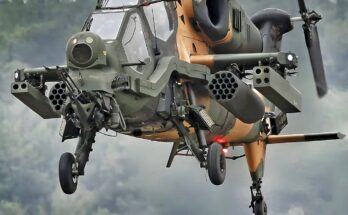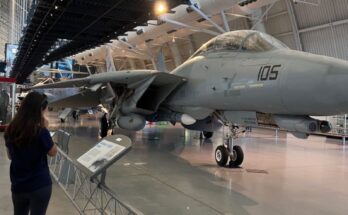
The Lockheed Martin F-22 Raptor is one of the most advanced and iconic fighter aircraft ever built. Designed as a fifth-generation stealth air superiority fighter, it combines cutting-edge technology, unmatched maneuverability, and a powerful arsenal to maintain U.S. dominance in the skies. Since its introduction, the F-22 has represented the pinnacle of modern air combat capability, setting the standard for future fighter designs.
Development of the F-22 began during the Cold War, when the U.S. Air Force sought a replacement for the F-15 Eagle to ensure air superiority against increasingly sophisticated Soviet aircraft. In 1986, the Advanced Tactical Fighter (ATF) program was launched, leading to a competition between Lockheed Martin and Northrop. Lockheed’s YF-22 prototype was eventually selected over the YF-23, largely due to its agility, stealth performance, and advanced avionics. The production version, the F-22 Raptor, officially entered service in 2005.
One of the F-22’s most remarkable features is its stealth technology. Built with radar-absorbing materials, carefully angled surfaces, and internal weapons bays, the aircraft is designed to minimize radar cross-section, making it difficult for enemy radar systems to detect or track. Unlike earlier fighters that relied on speed or armor, the F-22 excels by avoiding detection altogether, allowing it to strike before adversaries even know it is present.
In terms of performance, the Raptor is a marvel of engineering. Powered by two Pratt & Whitney F119-PW-100 turbofan engines with thrust vectoring nozzles, the jet can reach speeds of Mach 2.25 and cruise at supersonic speeds without afterburners, a capability known as “supercruise.” Its thrust vectoring gives it extraordinary maneuverability, allowing it to perform advanced aerial maneuvers that most other fighters cannot match. These capabilities make the F-22 not only lethal in combat but also nearly untouchable in dogfights.
The F-22 also boasts advanced avionics and sensor fusion technology. Its radar, the AN/APG-77 Active Electronically Scanned Array (AESA), provides long-range detection and tracking, while its onboard computers integrate data from multiple sources to give the pilot a complete picture of the battlespace. This situational awareness is a crucial advantage, allowing Raptor pilots to identify and engage threats long before opponents can react.
In combat, the F-22 carries a versatile weapons load, including air-to-air missiles like the AIM-120 AMRAAM and AIM-9 Sidewinder, as well as precision-guided bombs for ground attack missions. All of these are carried internally to preserve stealth, though external hardpoints can be used when stealth is not a priority.
Despite its unmatched capabilities, the F-22 program faced challenges. High development and production costs limited the number of aircraft built. Originally planned for over 700 units, production was capped at 187 operational Raptors due to budget constraints and shifting defense priorities. In 2012, the production line officially closed, making the F-22 an exclusive but limited asset.
Today, the Lockheed Martin F-22 Raptor remains the most advanced air superiority fighter in the world. Though newer designs like the F-35 Lightning II have emerged, the F-22 still holds a unique place as the unmatched guardian of the skies, combining stealth, speed, agility, and firepower in a single platform. Its legacy continues to shape future generations of air combat technology, ensuring the U.S. maintains air dominance well into the 21st century.


